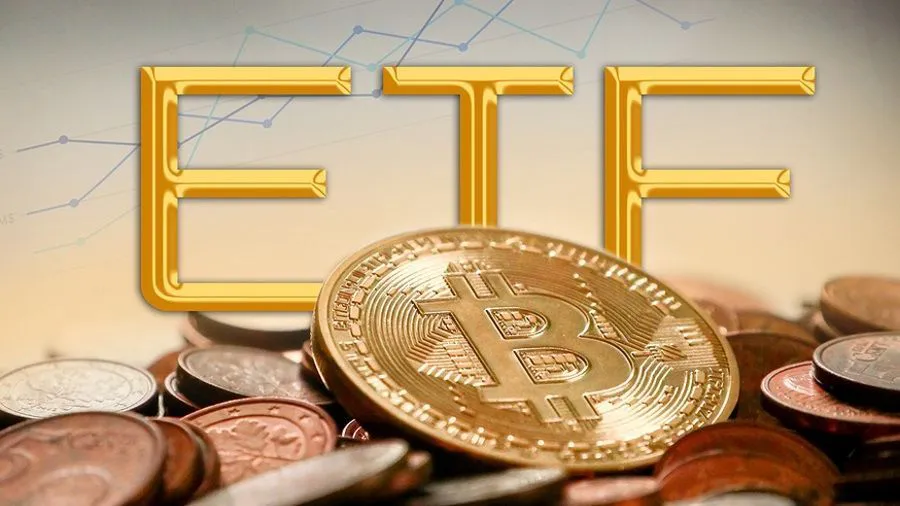9 Crypto Market Trends to Watch in 2023
The past year was extremely volatile for crypto. However, we expect this trend to change as we progress into 2023. In this article, we highlight a few potential crypto market storylines to look for in 2023:
1. Mass adoption
We anticipate continued institutional cryptocurrency adoption In the coming years, as more businesses, financial institutions, and investment funds are expected to start using cryptocurrency and blockchain technology. This could increase demand for cryptocurrencies and broaden their acceptance.
Many people in developing countries face barriers to traditional financial services, and cryptos and blockchain technology have the potential to create a more inclusive financial system. It is possible that cryptocurrency adoption will increase in these markets in 2023.
2. Enhanced regulation
Governments and regulatory agencies all over the world are likely to have greater regulatory clarity by taking a closer look at the cryptocurrency market. More regulatory clarity and guidelines for the industry are likely to occur this year, which could help to reduce uncertainty and increase market stability. The cryptocurrency industry has thrived due to its unregulated nature and decentralized structure. However, many analysts argue that they are open to regulations provided the rules are transparently implemented.
Countries have been trying to look for a way to regulate crypto in a way that curbs cybercriminals and enhance retail investor safety. Countries like China have banned crypto activities within its borders, except those authorized by the government. However, illegal mining still happens in the country.
Cryptocurrency entrepreneurs and investors are anticipating a more moderate attitude stateside, where the Commodity Futures Trading Commission, Securities, and Exchange Commission, and offices under the Treasury Department have all been pushing for new regulations. Regulations could bring clearer taxation guidelines for investors and even allow them to link cryptocurrency investments into retirement accounts. Should popular crypto trading tools adjust to regulations, they could assist promote adoption by issuing a new layer of security to investors.
3. More Bitcoin ATMs
The intangible nature of crypto makes people not recognize them as real money because they can't touch or see them. However, the installation of Bitcoin ATMs is gradually becoming a reality across the world, individuals will be able to use virtual assets similar to tangible investment instruments.
Since 2015, the distribution of Bitcoin ATMs has been rising and recorded new highs in 2021. The Coin ATM Radar reported last year that there are over 33,000 Bitcoin ATMs worldwide.
Bitcoin ATMs usually enable individuals to buy Bitcoin using their credit or debit cards. This makes crypto easily accessible for both enthusiasts and newbies. Bitcoin ATMs allow people to carry out crypto transactions easily using them except for high fees that may have people looking for crypto brokers to get better rates.
4. Continued BTC price volatility
Bitcoin is by far the largest crypto globally and its price acts as the benchmark for the cryptocurrency market.
In 2021, Bitcoin experienced a consistently volatile performance that saw it set an all-time high in April of the same year at over $60,000 then dropping to less than $30,000 in July. The digital asset then improved to set a new all-time high of almost $70,000 in November, only to crash to its current level at $46,266. That volatility is expected to continue well into the year and beyond considering that the crypto market is still developing.
The volatility of Bitcoin is one reason why many asset experts advise caution and inform clients to only use 5% of their portfolio for cryptocurrency investments. Investors need to be fully prepared for BTC to crash just as often as it skyrockets.
What crypto bulls expect is that virtual assets will continue to experience short-term volatility, but will continuously rise in value over the long term, amid periodic abrupt corrections. Therefore, investors should be patient and not worry over temporary fluctuations and focus on the long-term outcome.
5. Environmental developments

Cryptocurrency skeptics have focused on the environmental effect of blockchain networks, especially on NFTs minting.
BTC mining requires high computation power, which consumes a lot of energy.
Because most of the crypto market capitalization is generated by coins that utilize proof-of-work for their mining process, it's unlikely to see any major change in energy costs this year. Apart from the high energy costs of BTC mining, the exercise also generates high e-waste from scrap mining rigs.
On the other hand, emerging crypto including Cardano and Solana have been commended for adopting a proof-of-stake process, which does not involve high energy consumption.
Ethereum, the second leading coin by market capitalization is about to shift to proof-of-stake, which could influence other cryptos to adopt and thus make their process eco-friendly.
In case the adoption of eco-friendly crypto thrives in 2023, it'll benefit the space, even if BTCs energy consumption doesn't improve.
6. Crypto ETF sanctions

When BITO, the initial Bitcoin futures ETF (exchange-traded fund), was unveiled at the New York Stock Exchange last year, it hit almost $1 billion in trades on its inaugural day, marking a record launch. It was an indication of the long-building investor interest in a cryptocurrency product they can purchase and trade on regular exchanges.
However, BITO is just a way for retail investors to get exposure to Bitcoin futures, not the real Bitcoin. BITO is not a "spot" exchange-traded fund. The SEC has been flooded with applications for ETFs that are based on the current price of cryptos but has never authorized one. Still, based on BITO's performance coupled with the faith that investors are putting in it, a BTC spot ETF is highly likely to get approved this or very soon after—along with potential ETFs linked to other cryptos, which could bring in more new retail investors.
7. Services businesses and crypto
Brian Chesky, Airbnb CEO has announced that support for crypto payments tops the list for most-requested products this year.

In January last year, the Airbnb boss asked his Twitter audience to share their opinions on new services the vacation rental platform had plans to launch in 2022.
After sampling the suggestions, he announced that users were most interested in incorporating cryptocurrency payments for Airbnb.
This suggestion was accompanied by pricing lists and a customer loyalty program.
The Airbnb chief said, "We are already working on some of these new products and will look into others now."
Concerning the possibility of integrating support for cryptocurrency payments, Chesky stated that this suggestion involved a list of token ideas.
The Airbnb boss added that since 2013 the company had recorded approx. $336 billion in payments volume.
Earlier in September 2021 during an interview with Fox Business, Chesky said that customers have been requesting Airbnb to introduce crypto payments for the last few years.
Airbnb admitted that "these efforts may be more costly than expected and may not be successful."
On top of that, the firm pointed to likely vulnerabilities and failures that can happen when executing vital technical innovations.
If the San Francisco-based company finally integrates crypto payments, it would be the trailblazer in high-profile firms to adopt the new industry.
These include payments giant Paypal, payments processor Block (formerly Square), and movie theater chain AMC.
8. Enhanced security and user protection laws
As the crypto market matures, it is anticipated that a greater emphasis will be placed on security and user protection laws. This could include developing technologies to enhance the security of crypto exchanges and wallets, as well as implementing new regulatory measures that safeguard consumers.
Governments and regulatory bodies are likely to continue taking steps to improve security and protect cryptocurrency users' rights. Stiffer requirements for exchanges and other crypto service providers to implement security measures and protect user data, as well as measures to educate and inform consumers about how to safely use and store their cryptocurrencies, could be part of this. Depending on the jurisdiction, new laws and regulations addressing the use and trading of cryptocurrencies may also be enacted.
9. Continued innovation and development
Because the cryptocurrency market is still relatively new, there is plenty of room for further development and innovation. New use cases for crypto assets and blockchain technology, as well as the creation of new different kinds of cryptocurrencies and decentralized applications, may also emerge.
The increasing institutionalization of the cryptocurrency market is one trend that has gained traction in recent years. This has resulted in the creation of new financial products and services aimed at institutional investors, such as bitcoin futures and options. It's possible that we'll see more of these products developed in 2023, which could help to increase market liquidity and make it more accessible to a broader range of investors.
Another thing to keep an eye on is the growing use of decentralized finance (DeFi) applications, which use blockchain technology to provide financial services that are not tied to traditional financial institutions. DeFi has the potential to disrupt traditional financial systems and lead to the creation of new financial products and services.
As new technologies and trends emerge and the market matures, we can expect to see a high level of innovation and development in the cryptocurrency market in 2023.
First published on Jan 5, 2022
Bitcoin